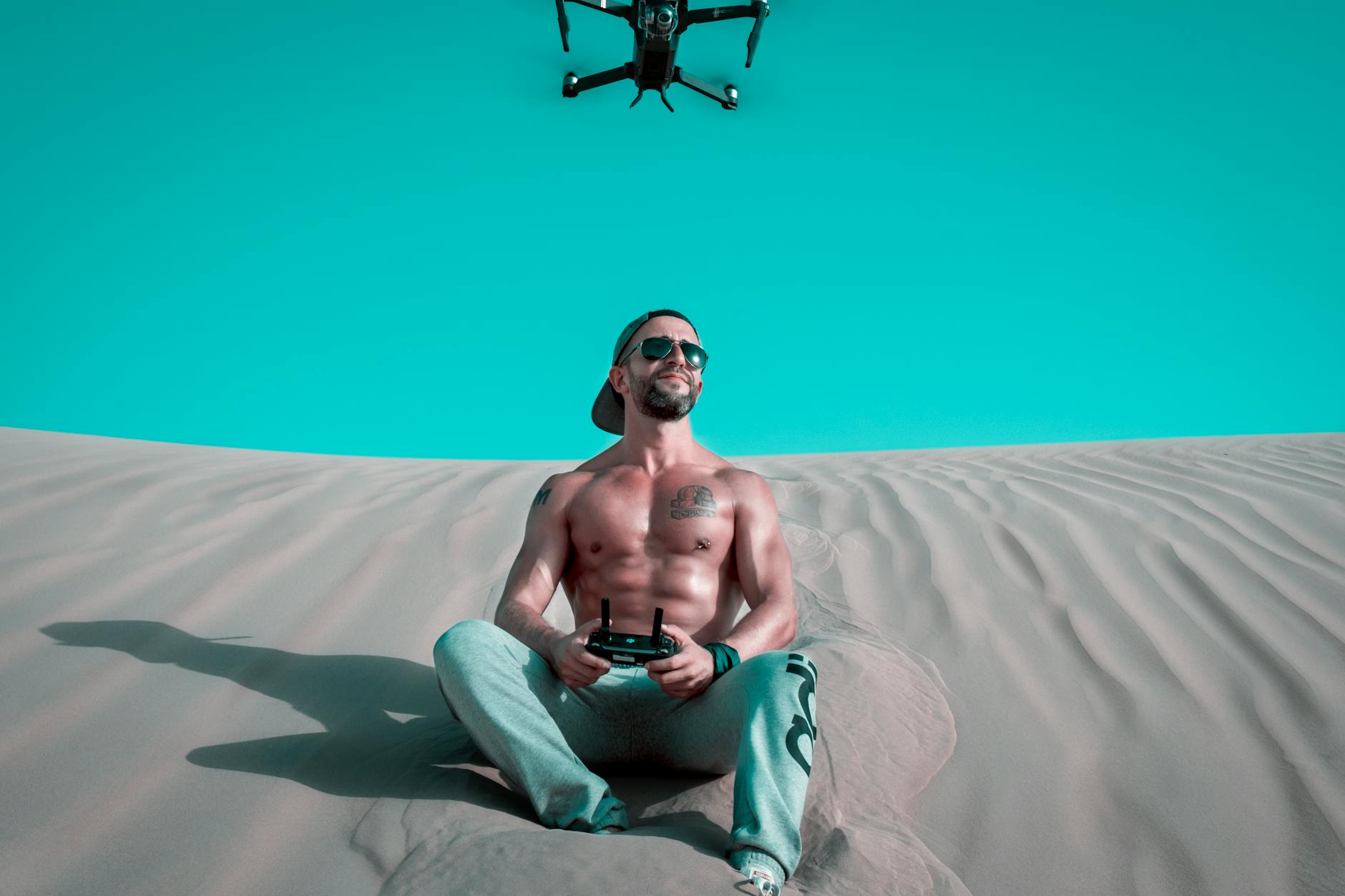 Your adventure awaits. Mantis is ready. Small yet powerful, Mantis Q features cutting edge, advanced drone features such as voice control and facial detection in an easy-to-use, ultra portable package. Thanks to its energy-efficient design, the drone can stay in the air for a category-leading 33 minutes, allowing pilots plenty of time to record great photos and video clips. When folded together, the Mantis is small enough to tuck in a bag and weighs just 1 pound.
Your adventure awaits. Mantis is ready. Small yet powerful, Mantis Q features cutting edge, advanced drone features such as voice control and facial detection in an easy-to-use, ultra portable package. Thanks to its energy-efficient design, the drone can stay in the air for a category-leading 33 minutes, allowing pilots plenty of time to record great photos and video clips. When folded together, the Mantis is small enough to tuck in a bag and weighs just 1 pound.It’s the ideal companion for big and small adventures alike.
Your browser does not support HTML5 video. Your adventure awaits.
Mantis is ready.Small yet powerful, Mantis Q features cutting edge, advanced drone features such as voice control and facial detection in an easy-to-use, ultra portable package.
Thanks to its energy-efficient design, the drone can stay in the air for a category-leading 33 minutes, allowing pilots plenty of time to record great photos and video clips.
When folded together, the Mantis is small enough to tuck in a bag and weighs just 1 pound. It’s the ideal companion for big and small adventures alike.
AMA Drone Report 08.23.18: Yuneec Mantis Q, Amazon at NASM, Coffee ... Fast-paced fun while flying Users also have the option to fly Mantis Q with and without the added controller. If users want to experience the thrill of drone racing, they can switch to the Mantis Q’s Sport Mode. The Mantis Q can fly up to a maximum speed of 44 miles per hour – and that’s all while performing with the agility of a real racer.
The live image can be viewed with a latency of less than (200ms) on a smartphone which is connected to the remote control. Fast-paced fun while flying Users also have the option to fly Mantis Q with and without the added controller.
If users want to experience the thrill of drone racing, they can switch to the Mantis Q’s Sport Mode. The Mantis Q can fly up to a maximum speed of 44 miles per hour – and that’s all while performing with the agility of a real racer. The live image can be viewed with a latency of less than (200ms) on a smartphone which is connected to the remote control.
Drone with voice control "Wake Up" - The Mantis Q is the first camera drone from YUNEEC that can be intuitively controlled by voice command. Whether starting, landing or taking photos and videos: With commands such as "Come back" and "Start recording", the Mantis Q can be easily controlled via voice commands. A list of voice commands can be found in the settings of the Yuneec Pilot App by clicking on the "i" next to the menu item "Voice Control". "Mantis, take a selfie!" With the all new Voice Control feature, users can command Mantis Q just by using their voice. Voice control allows users to take a photo or begin recording video all without having to manually take their hands off of the controls, making it that much easier to capture the perfect shot.
Mantis Q responds to commands such as “Wake up” for powering on, “Take a picture”, “Record a video” and “Take a selfie”."Mantis, take a selfie!" With the all new Voice Control feature, users can command Mantis Q just by using their voice.
Voice control allows users to take a photo or begin recording video all without having to manually take their hands off of the controls, making it that much easier to capture the perfect shot. Mantis Q responds to commands such as “Wake up” for powering on, “Take a picture”, “Record a video” and “Take a selfie”. Vision based tracking and face detection Simply smile at the drone to activate face detection and as soon as the Mantis Q “sees” the user’s face, it will take a photo from up to 13 feet away. In Gesture Control mode, Mantis Q will detect a hand waving and it will take a photo.Vision based tracking and face detection Simply smile at the drone to activate face detection and as soon as the Mantis Q “sees” the user’s face, it will take a photo from up to 13 feet away. In Gesture Control mode, Mantis Q will detect a hand waving and it will take a photo.









